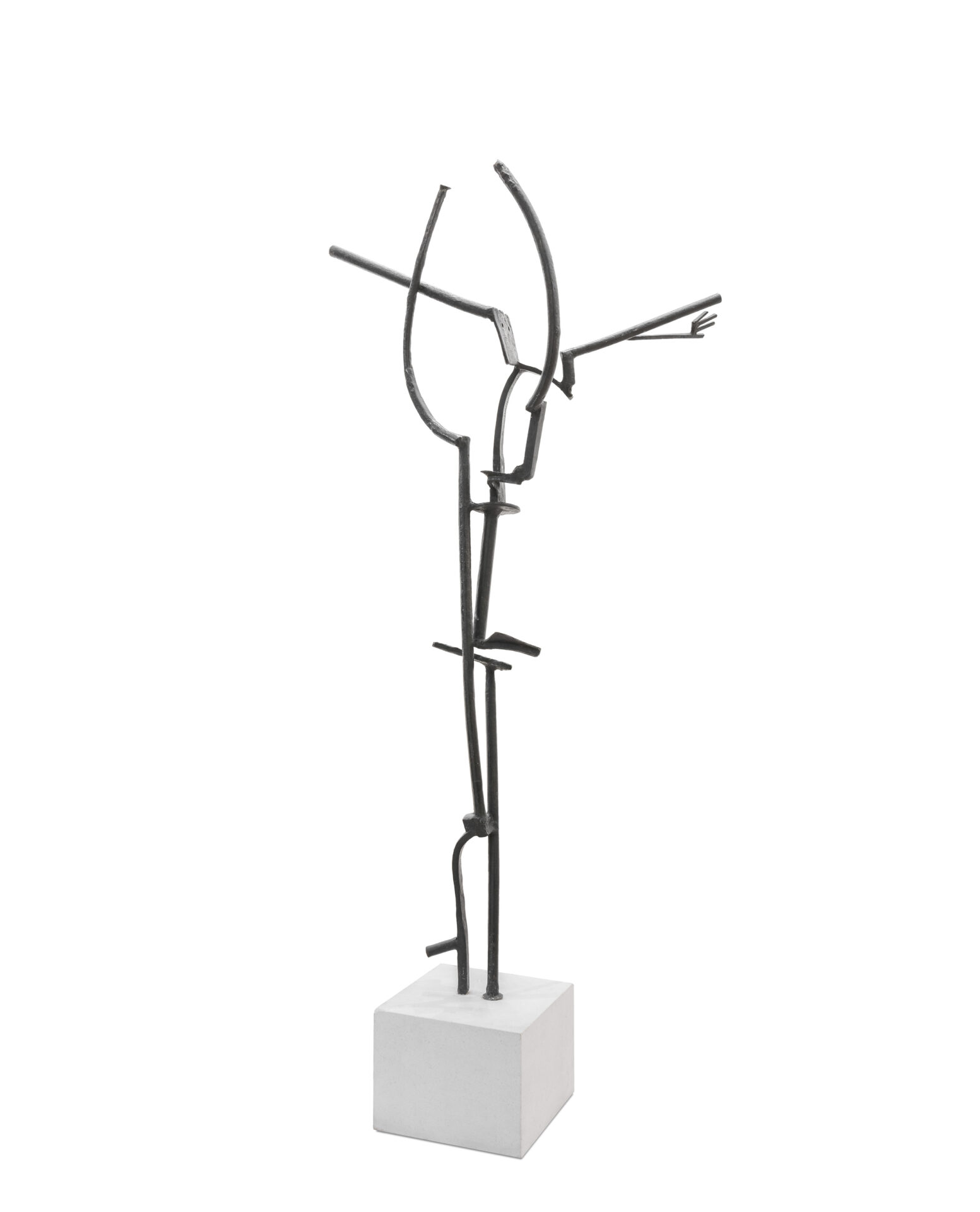Julio González, a pioneer of modern sculpture, is considered one of the most important Spanish sculptors of any era. The key to his work was introducing wrought iron into sculpture for the first time. As he himself remarked in one of his scarce writings: “The Iron Age began many centuries ago by producing – unfortunately – weapons, some of them very beautiful. Today it makes it possible to build railways. It is time this metal ceased to be a killer and the instrument of a mechanistic science. The door is open for this material to be forged and hammered, finally, by the peace-loving hands of artists.”1
Julio González was born in Barcelona in 1876 into a family of goldsmiths. He moved to Paris in 1899, where he settled permanently and began combining his work as a painter with precious metalworking. In 1910 he made his first repoussé metal masks under the clear influence of primitive art. He also learned the technique of autogenous welding at a French factory, which led artists such as Brancusi and Picasso to seek him out for his technical knowledge. In the late 1920s, with Picasso, he produced a monument in homage to the poet Guillaume Apollinaire.
En 1937 González participated in the Spanish pavilion at the Paris International Exhibition with La Montserrat, an emblematic work representing pain and anguish in the face of war, exhibited with works by Joan Miró and Alexander Calder, and Picasso’s famous Guernica.
Julio González’s art is characterised by being halfway between figurative and abstract. In addition to La Montserrat, his best-known works are La mujer ante el espejo and the series of cactus men and women. His work has had a great influence on later artists, such as David Smith, Jean Tinguely, Anthony Caro and Eduardo Chillida.
The Hortensia Herrero holds a bronze sculpture by Julio González called Grand personnage debout (1935), which comes from an original in iron belonging to the Fondation Maeght collection in Saint-Paul-de-Vence (there is another copy of this work in the IVAM collection). This sculpture, a prime example of the style that González himself described as “drawing in space”, presents a standing figure made from iron rods. In the opinion of the art historian Guillermo Solana, these vertical rods could be inspired by the antennae of insects or those of radios, which were very popular in the period when the work was created.2
